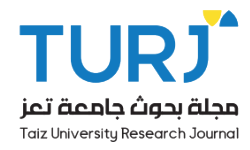The Semantics of Colors in Taizzi Dialect: Culture and Cognition
محتوى المقالة الرئيسي
الملخص
The existence of colors in our everyday life is undeniable. They are ubiquitous. It is nearly impossible to imagine even a single entitle (be it an object, things, or living creature) devoid of them. This omnipresence of colors around us has made its way through abstract and less tangible entities through the interaction between culture and cognition. This paper, through shedding more light on how color meaning could be extended in languages and cultures using cognitive mechanisms such as metonymy, metaphor, and sense of opposite relation, sought to investigate the semantic extension of Taizzi dialect color terms namely red, white, black, and green, based on cultural data. The findings revealed the existence of three types of meanings: the original meaning, the extended meaning, and the abstracted meaning of color terms in Taizzi dialect and culture. It also revealed that Taizzi people used mechanisms like metonymy, metaphor, and sense of opposite relation based on their experience of the physical world as well as cultural data in understanding and perceiving the meaning of color terms. It found that it is possible to predict the direction and development of the new extended meanings of color in a specific language.
